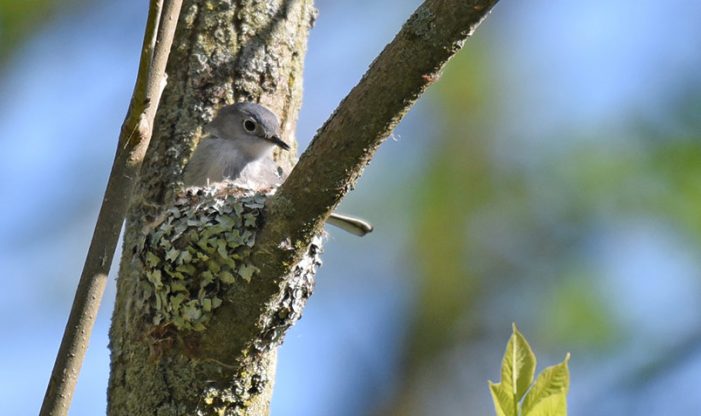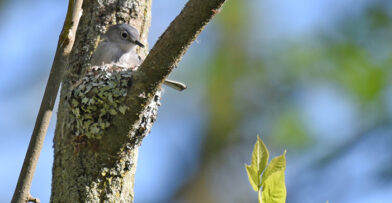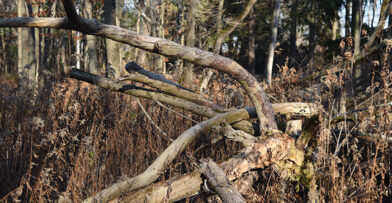In the excitement surrounding migration, we can sometimes overlook birds that breed at the Center. Some migrants continue flying north to find their nesting grounds, but for many birds our location is their preferred breeding destination. These breeding birds will spend a significant amount of time here propagating the next generation of birds.
Why Birds Breed at Schlitz Audubon
Several factors make Schlitz Audubon a desirable habitat for breeding birds. Our location along Lake Michigan, within the Mississippi Migratory Flyway, and our variety and quality of ecosystems, provides stopover habitat for 260 species of birds that have been seen here. Of those 260, approximately 125 species stay here to breed at the Center.
Studying the behavior of breeding birds is one way bird observers and scientists come to understand the population trends of bird species. Each species has its own breeding time, habitat type, and variables that affect their breeding patterns, and therefore which birds we are likely to see at Schlitz Audubon. The vast majority of birds tend to breed in June through August, but some species, such as the American Woodcock, will begin nesting as early as April.
The Cycle of Breeding
Finding the Place to Breed
Birds travel to their breeding grounds, hoping there will be sufficient habitat to build a nest as well as ample food for extra mouths. Males then select and then defend their territory from other birds by vocalizing or physically menacing other birds. House Wrens are a unique example, as the male will construct several placeholder dummy nests to mark their chosen territory, then the female mate will select her preferred location and complete the nest. Last year House Wrens nested inside the fencepost hole in front of Sky Walker’s enclosure!
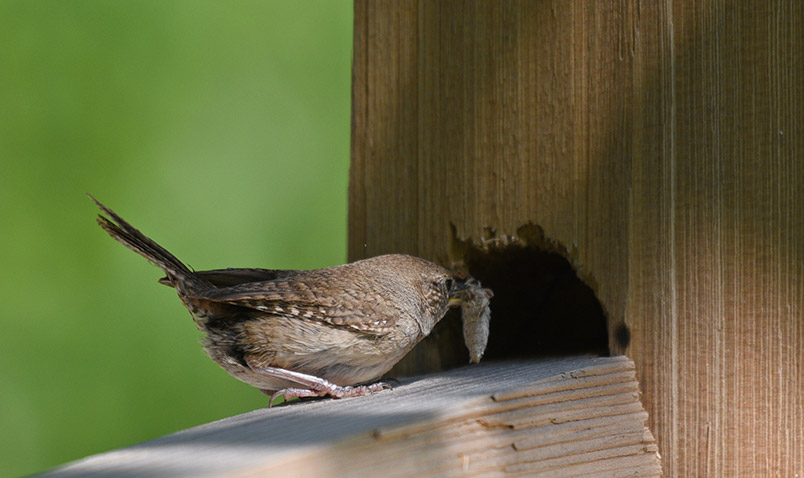
A House Wren near Sky Walker’s enclosure at Schlitz Audubon, taking food into its nest to feed its young.
Choosing a Mate
Bird courtship is fascinating to observe. This is often when we hear males singing to attract a female. Males flaunt vibrant colors, as this indicates they are healthy and can successfully find food. When we hear birds singing, much of their communication is either to attract females or to tell other males to stay out of their territory. For habitat, the American Woodcock requires a thinned forest or grassland and they then use the open sky to perform their “sky dance” to impress potential mates. During this sky dance, males’ wings whistle as they climb, and then as they fly in circles around a territory, then gradually drift to the ground while vocalizing a liquid chirping. In early spring, you can witness this dazzling display around dusk in the prairie immediately west of the main building.
By conserving and restoring the land, we provide breeding birds with a space to return to year after year, ensuring that their vibrant colors greet us on the other side of our binoculars.
Building a Nest
Nest building strategies depend on the species. In some, both sexes build the nest together, in others the male is busy defending territory while the female builds, and some males complete the architecture solo. Nesting material can include twigs, grasses, pine needles, leaves, moss, tree bark, feathers, and other organic materials. Some birds are cavity nesters, others nest on the ground, some build hanging nests, as well as just about everything you can imagine in-between. More than a dozen types of nests can be observed at Schlitz Audubon. All of these birds have unique nest needs, and our various habitats such as forests, ponds, prairies, and others, provide these particular needs. Baltimore Orioles weave a small hanging nest between slender tree branches, and you can see them being built around Mystery Lake in May.
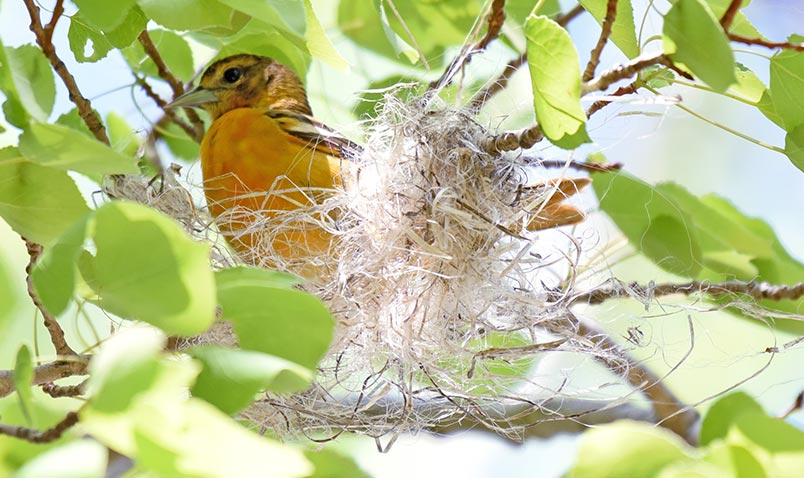
Female Baltimore Oriole working on weaving her nest.
The female Song Sparrow spends about four mornings building a nest on the ground. Blue-gray Gnatcatchers often build nests where two branches bifurcate, more than halfway up the height of the tree, using lichen and leaves as camouflage on the outside of the nest. Sometimes, if a bird nest is destroyed (often by weather, predators, or competing bird species) early in the season, the pair will rebuild a nest and work to raise a clutch.
Making and Hatching Eggs
Birds copulate through cloacal contact and the sperm can remain fertile for up to 10 days. Females produce eggs within 24 hours and most clutches are two to four eggs. Incubation time and egg sitting strategies vary. Sometimes males and females take turns, sometimes the male brings the female food while she sits. The Center has four Woodpecker species that breed here, and the males and females take turns incubating on the nest and foraging for food. Depending on the species, some birds are incubated for less than two weeks, while other birds can spend more than a month growing inside of the egg. Some bird species will produce successive clutches within the same year until it’s time to retreat to warmer weather.
Feeding and Fledging the Young
Once a baby bird hatches, its needs vary depending on the species. Most songbirds are altricial birds and are born without feathers and with their eyes closed, needing their parents to keep them warm and fed. Precocial species, such as ducks, are born with open eyes and feathers and are mobile on foot from the time they hatch. Fledging (the act of leaving the nest) can take place weeks or months from birth, depending on the species. Generally the larger the species the longer time before fledging.
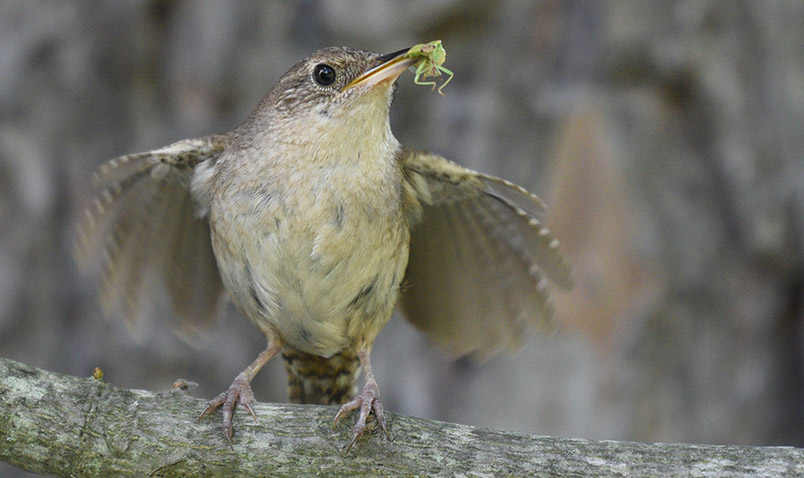
A House Wren catching an insect at Schlitz Audubon.
Ongoing Conservation for Breeding Birds
Fostering an environment where birds can return to perpetuate their species has the benefit of improving our experience while exploring the forests, ponds, and prairies at the Center. By conserving and restoring the land, we provide breeding birds with a space to return to year after year, ensuring that their vibrant colors greet us on the other side of our binoculars. We provide them with a home, and – although not necessarily for us – they sing to our ears’ delight.
Written with expertise from Marilyn Bontly, Zoe Finney, Don Quintenz, Jean Strelka, and Norma Zehner
